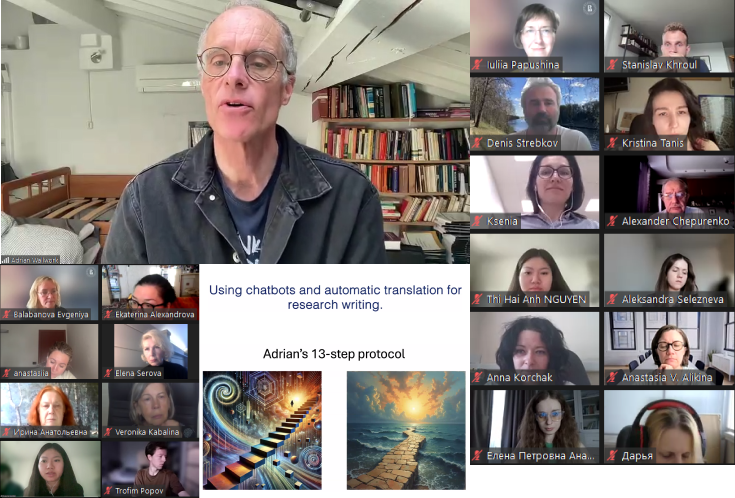Mastering machine translation: 13 steps to success
Machine translation has become an indispensable tool, even for language professionals. However, its quality often leaves much to be desired. The main challenge lies in the differences in structure and syntax between languages - the issue that artificial intelligence has yet to fully overcome. Can this problem be solved?

On April 22, Adrian Wallwork led a workshop titled “Using chatbots and automatic translation for research writing,” where he shared his strategy for effectively using machine translation in academic writing. The main takeaway: if you expect adequate outcomes from AI, the source text should be carefully fine tuned before translation. Adrian outlined 13 steps to help participants transform a draft in their native language into a high-quality English text.
The participants found the practical tools and actionable advice especially useful:
-
“There were so many great aspects: clear, practical instructions; humor and personal anecdotes that built rapport; and a high level of professionalism throughout.”
-
“It was a great workshop! I discovered new AI tools, practiced creating effective prompts, and received checklists to help assess prompt quality.”
-
“I've finally learned why and how to write short sentences, and how to translate my text without losing its meaning.”
The end of semester is approaching fast, but we still have a lot to offer: one more course and several workshops. After the spring holidays, we are hosting a face-to-face workshop on articulation, intonation, and accent. Join us!
